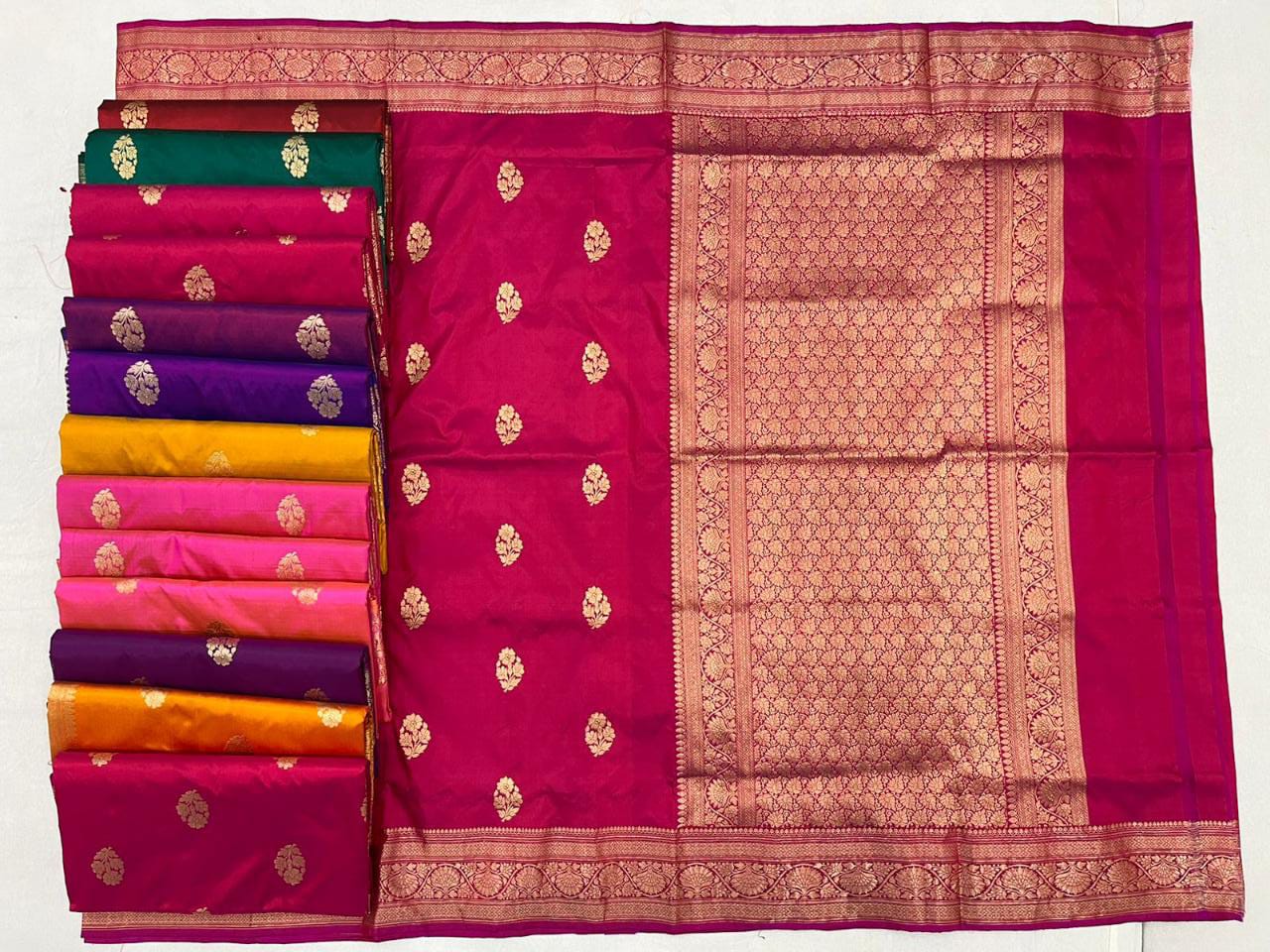You may have heard a number of times about Kadhwa weaving and the beautiful sarees made using this intricate technique while you buy banarasi sarees. But do you actually know about it? If not, you’ll definitely not be able to assess its beauty in Banarasi sarees. Here, we provide you with complete information about this technique straight from Albeli's skilled artisans.
The Kadhwa technique is the most advanced and complex of the Banaras handloom weaving traditions. The luxurious Banarasi fabrics are embellished with Resham zari to create stunning patterns or motifs using this intricate weaving technique, transforming the ensemble into a magnificent work of art.
Read on to learn everything about this complex weaving technique practised for ages in Banaras.
[Know 5 Tips To Know Before Buying Banarasi Silk Sarees Online]
What is the Kadhwa technique?

Kadhwa, or Kadhua, is an age-old weaving technique. It is one of the most complicated and laborious weaving techniques used to incorporate motifs on Banarasi sarees, and every motif is to be created separately. Only a handloom may be used to weave this particular variation of brocade and that’s the expertise of the skilled Banarasi weavers.
Banarasi sarees are versatile, and any type or number of design styles can be crafted on them; however, this technique requires much more time and labour in comparison to other techniques used to make banarasi sarees.
In addition to being extremely difficult to create, the technique is exceptional because no loose thread is left on the back of the sarees. This technique makes it possible to create intricate designs with multiple colours on the same saree, which is a difficult task.
On a loom, it is often a laborious weaving method that resembles embroidery. With varying numbers of warp yarns going through the heddle shaft, plain, twill, or satin weaves are used to create the desired weave structure. The surface detail of the main design is determined by the level of craftsmanship used to create it, which in turn determines its worth.
A Kadhwa banarasi saree may take several weeks or even months to make. To produce a range of textures and motifs, the weaver combines several methods, such as floating wefts, interlocking wefts, and cutwork. The borders and aanchal are woven using the traditional Kadiyal technique with modifications to the warp and weft that are different from the body colour. These classic designs honour our illustrious and varied past.
[Learn The Manufacturing Of Varanasi's Classic Banarasi Saree]
What does the process of Kadhwa weaving involves?
To make you understand this complex weaving technique, we have simplified the process for you in brief so that you get to know how Kadhwa weaving is done using a handloom.
Two sets of yarns or threads are required to weave any cloth. The warp, also known as the Taani, is one that runs along the length. The second, known as the weft, spans the width. The loom is fixed to the warp, which is made up of thousands of extremely fine strands.
Before weaving begins, the warp is set up on the loom, where it stays stationary during the weaving process. In contrast, the weft thread is wound on a tiny wooden shuttle and manually tossed across the width of the fabric to weave it. The warp is raised at regular intervals using a jacquard machine at the top of the loom to create gaps between the strands that make up the warp.
A second set of strands, known as the supplemental weft, is used in a Kadhwa brocade weave to weave the motifs, such as a buta, jaal, or any other pattern. This additional weft, which gives a brocade its distinctive clothing look, is typically made of resham zari yarns in a banarasi brocade saree.
Why is the Kadhwa weave the most expensive weave?
The Kadhwa weave is regarded as one of the most expensive Banarasi weaves in India since it requires one of the most sophisticated and labour-intensive weaving methods. This is possible for a number of reasons:
Use of fine-quality materials
High-quality silk threads are used by the weavers in Kadhwa weaving to make their sarees, and the silk is frequently procured from areas of India that are renowned for its outstanding quality. The expense of weaving increases with the usage of fine materials.
Designs that are distinctive
Kadhwa Banarasi sarees are renowned for their rich and complex designs, which are frequently influenced by traditional motifs and patterns. The expense is increased by the fact that each saree is special and takes a high level of craftsmanship to make.
Time-consuming process
Each saree is made using the Kadhwa weave, a handloom weaving method that requires elaborate designs and patterns and can take several weeks to finish. The designs are made by the weavers using a method known as the extra-weft technique, which entails weaving in the extra-weft threads independently from the main weft. The intricate nature of this method and the high expense of the weave both contribute to its high skill and attention to detail requirements.
[Know What Are The Sarees For Indian Skin Tone]
Relatively limited production
Independent weavers or small weaving groups frequently create Kadhwa banarasi sarees in tiny numbers. Due to their restricted manufacture and lack of mass production, sarees may become more expensive.
The lengthy weaving process, use of finest-quality material, creation of distinctive motifs, and limited manufacturing all contribute to the high price of the Kadhwa weave. Nonetheless, Banarasi kadhwa sarees are highly prized and sought-after types due to the elegance and intricacy of the weave.
Final Thoughts
Banarasi sarees are renowned for their timeless beauty and elegance. The traditional and distinctive Kadhwa weaving technique enhances the beauty and opulence of Banarasi sarees. These sophisticated and elegant drapes are perfect banarsi for a all occasions, such as ceremonies, weddings, festivals, anniversaries, etc.
The kadhwa technique is the most prized in Banaras, and Banarasi handlooms are adored and highly appreciated in the handloom business. Thus, if you love handcrafted sarees, you must own a Kadhwa banarasi saree.
Albeli is experienced handloom banarasi saree manufacturer in Varanasi having experience and expertise of more than three decades. So, start exploring the stunning collections of Banarasi sarees at Albeli banarasi saree shop in Varanasi to add distinctive styles to your wardrobe.



.webp)


Comments
Leave A Comment: